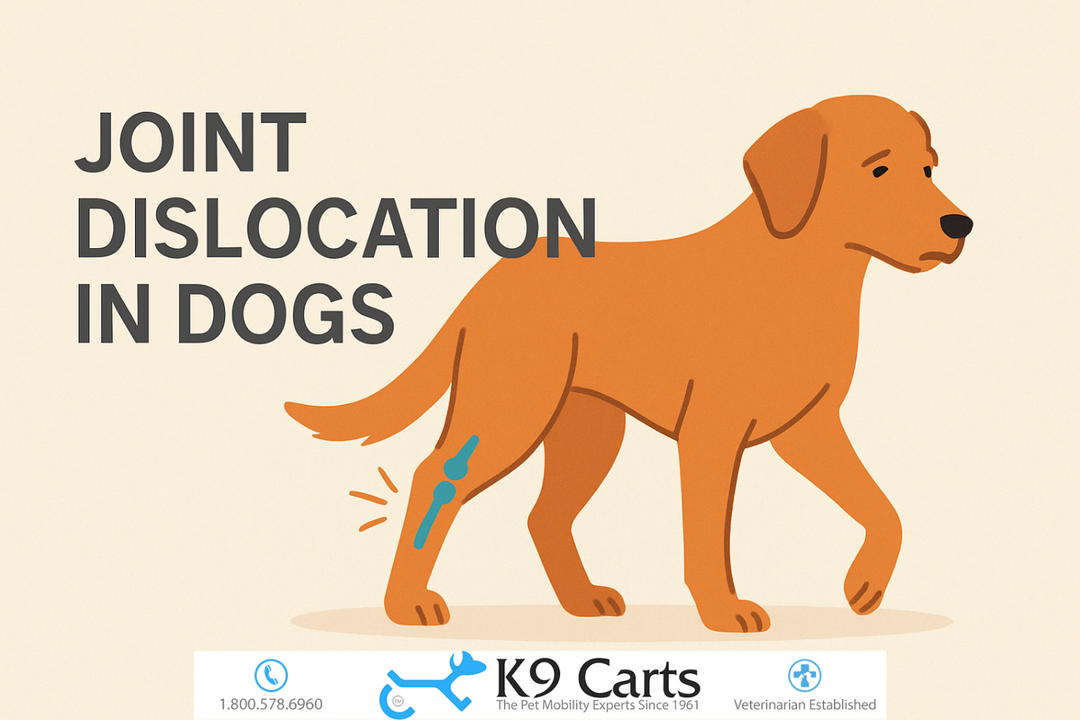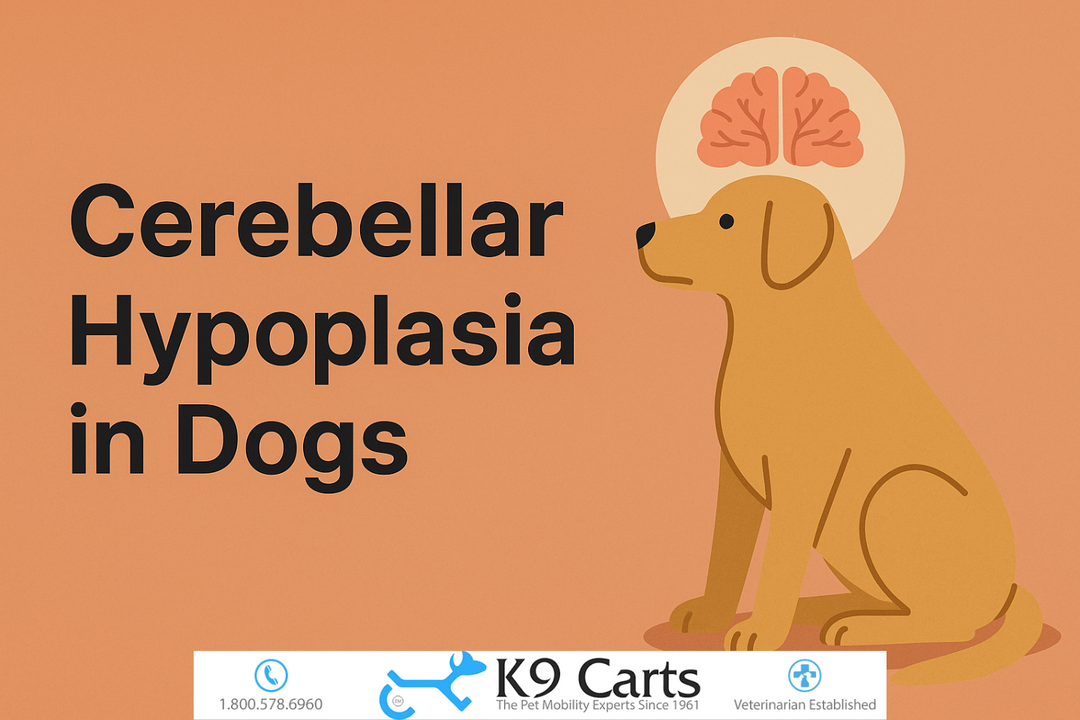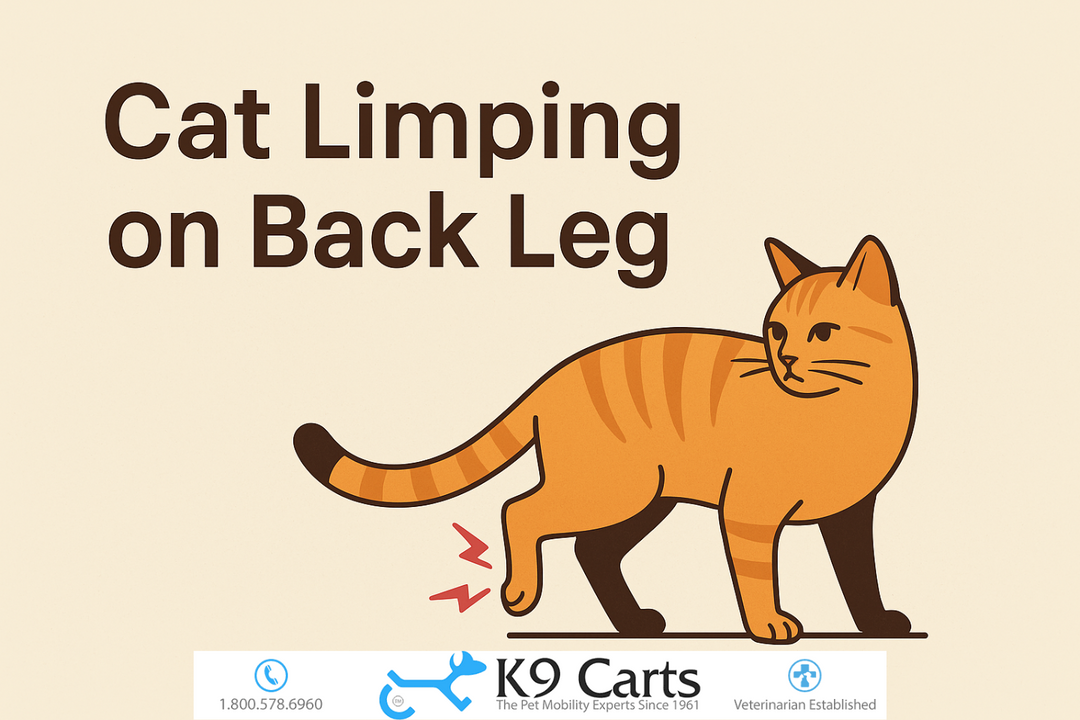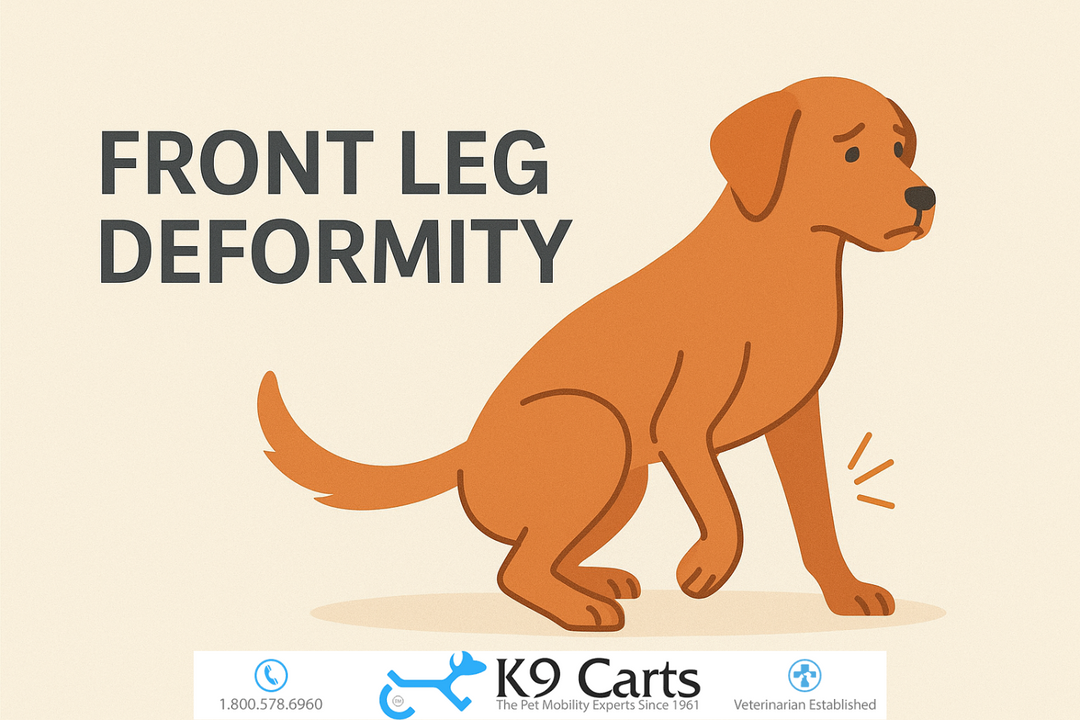Joint Dislocation in Dogs: Causes, Symptoms, and Treatment Options

Joint dislocation in dogs is a serious condition that affects mobility and comfort. When a dog’s joint comes out of place, it can cause pain, swelling, and changes in how they walk or move. Some dogs recover fully with proper care, while others may need long-term support.
If you’re caring for a dog with a dislocated joint or want to understand how to help prevent it, this guide covers everything you need to know. From causes and signs to treatment options and mobility support, every part of the process is important in helping your dog live well.
What is joint dislocation in dogs?
Joint dislocation, also known as luxation, happens when the bones that normally meet at a joint are pushed out of position. This can be a partial dislocation (subluxation) or a full one. In either case, the joint no longer works the way it should, which can make it painful or difficult for a dog to move.
Common joints that dislocate in dogs include:
-
Hip
-
Knee (especially the kneecap)
-
Elbow
-
Shoulder
-
Ankle
Dislocations can be sudden, or they can happen over time due to weakening of the joint.
What causes joint dislocation in dogs?
There are several different reasons a dog may develop a joint dislocation. Understanding the root cause is important for choosing the right treatment and preventing future problems.
1. Accidents or trauma
The most common cause is a sudden injury. This can happen if a dog is hit by a car, falls from something high, or twists their leg while running or jumping. These types of injuries often lead to full dislocations that need immediate attention.
2. Joint problems present from birth
Some dogs are born with weak or shallow joints. Over time, these dogs can develop dislocations, especially in the knees or hips. Smaller breeds, like Pomeranians or Chihuahuas, often have kneecaps that slip out of place. This is called patellar luxation and is common in toy breeds.
3. Age-related joint wear
As dogs get older, their joints may wear down. Arthritis, loss of muscle strength, and loose ligaments can all lead to dislocations, especially in senior dogs. These dislocations may happen slowly and become more noticeable with time.
4. Prior injuries or surgeries
Dogs that have had joint injuries before may be at a higher risk for dislocation. Scar tissue, weakened ligaments, or muscle loss can make the joint less stable.
What are the signs of joint dislocation in dogs?
Recognizing the signs of a dislocated joint early can help prevent further injury. Symptoms may vary depending on the joint involved, but there are common signs to look for:
-
Sudden limping or refusal to use a leg
-
Holding a limb in a strange position
-
Swelling or puffiness around a joint
-
Signs of pain when touched or moved
-
A popping sound or sensation in the joint
-
Trouble walking or climbing stairs
-
One leg appearing shorter than the other
Some dogs may only show mild signs at first, especially in cases of partial dislocation. Always consult a vet if you notice any of these issues.
How is a joint dislocation diagnosed?
Your vet will start with a full physical exam. They’ll gently move the affected leg or joint to check for looseness, swelling, or signs of pain. Most of the time, they will also take X-rays to see the position of the bones. In more complex cases, they may recommend other scans.
It’s also important to check if there’s any damage to the surrounding tissues, like muscles or ligaments, as this can affect treatment decisions.
What are the treatment options for dislocated joints?
Treatment depends on how serious the dislocation is, how long it has been out of place, and the dog’s age and health. There are both non-surgical and surgical options.
Manual repositioning (closed reduction)
If the dislocation is recent and not too severe, the vet may be able to move the joint back into place by hand. This is done while the dog is under anesthesia to prevent pain and allow the muscles to relax. Afterward, the joint is kept in place using a bandage, sling, or brace for a few weeks while the tissues heal.
This method works best when the joint is still strong and hasn’t been damaged too much.
Surgery (open reduction)
If the joint is badly damaged or doesn’t stay in place after manual repositioning, surgery may be needed. Surgical treatment can include:
-
Repairing torn ligaments
-
Deepening or reshaping the joint
-
Inserting screws, pins, or plates to keep the bones stable
-
Removing parts of the bone if needed (such as the top of the thigh bone in severe hip dislocations)
Surgery is followed by a period of rest and physical therapy to help rebuild strength and mobility.
Ongoing care after treatment
Once the joint is back in place, your dog will need time to recover. The healing process may include:
-
Anti-inflammatory medication
-
Short walks to rebuild muscle
-
Physical therapy or massage
-
Supplements to support joint health
-
Keeping your dog’s weight down to reduce stress on the joints
Dogs that can’t fully recover or who develop long-term weakness in the legs may need additional support to stay active and safe.
Can a dog wheelchair help with joint dislocation recovery?
When a dislocation leads to lasting weakness, a custom dog wheelchair can give your dog the support they need to move freely again. For example, if a hip or knee joint no longer functions well, a rear-support wheelchair can:
-
Take weight off the injured leg
-
Keep your dog active during recovery
-
Prevent falls or additional injuries
-
Reduce pain caused by overuse of the joint
At K9 Carts, each wheelchair is made specifically for your dog’s size, shape, and condition. These carts are lightweight and easy to adjust, allowing your dog to stay mobile during recovery or even permanently if needed.
Can dogs live a normal life after a joint dislocation?
Yes, many dogs can live comfortably after a joint dislocation. Some recover fully and go back to normal activity. Others may need adjustments to their routine, such as shorter walks or ramps instead of stairs.
Dogs with permanent weakness or reduced use of a limb may not return to full mobility, but that doesn’t mean they can’t enjoy life. With the right support (whether it’s therapy, a mobility device, or a simple change in exercise) many dogs stay active and happy.
What can dog owners do to help prevent joint dislocations?
While not every dislocation can be prevented, there are some simple ways to reduce the risk:
-
Keep your dog at a healthy weight to ease pressure on the joints
-
Avoid letting your dog jump from high places
-
Use ramps or steps to get onto furniture or into the car
-
Provide regular, low-impact exercise to keep muscles strong
-
Feed a balanced diet with joint support supplements if needed
-
Schedule regular checkups with your vet, especially for senior dogs or breeds prone to joint problems
If your dog has already had one joint dislocation, talk to your vet about long-term care and prevention. Keeping joints strong and stable is the best way to avoid future injury.
Giving your dog the support they need
Joint dislocation can be a scary and painful experience for both you and your dog. But with the right care, many dogs recover well and continue to enjoy life. Whether your dog needs surgery, rest, or long-term mobility support, there are solutions that work.
If your dog struggles to walk or move comfortably after a joint injury, consider exploring custom mobility solutions like those from K9 Carts. Our dog wheelchairs are designed to help dogs move naturally and with less pain. When a joint can’t fully heal, a well-designed cart can give your dog the freedom they deserve.
Support, patience, and the right tools make all the difference. You know your dog best, so stay observant, ask questions, and don’t be afraid to try what works best for their body and their life.





